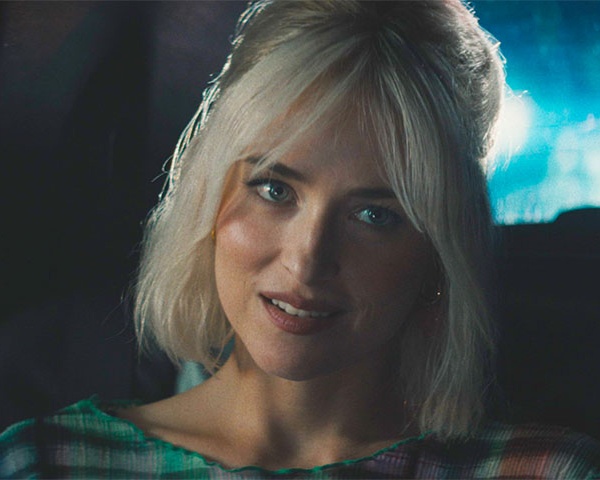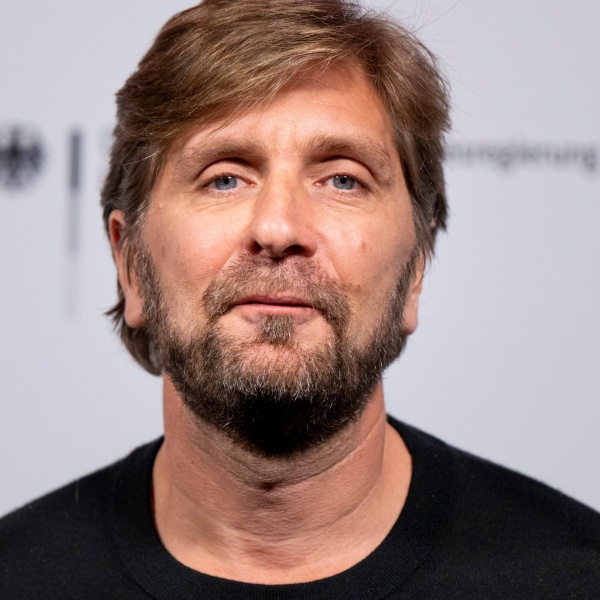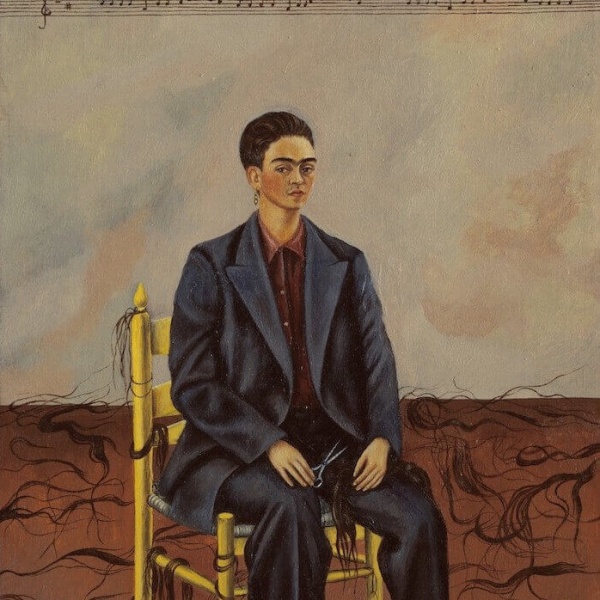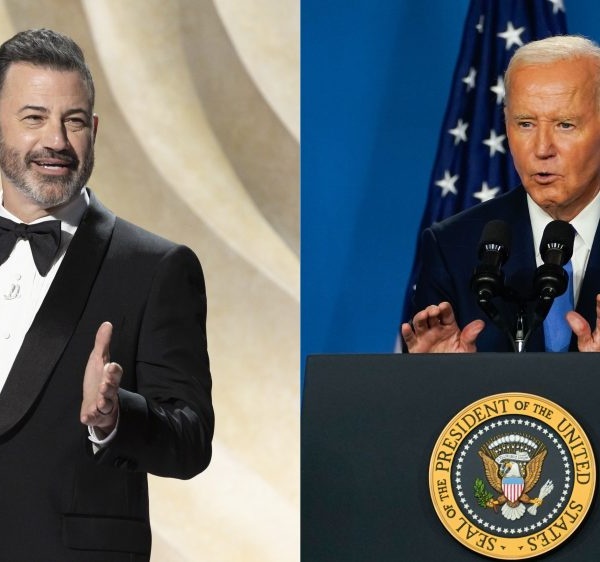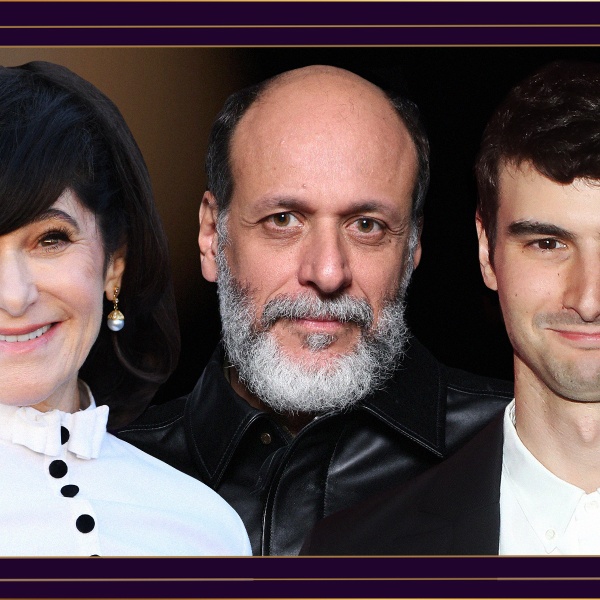Costume design is rarely as analyzed as cinematography or sound in its effect on film storytelling but is often just as impactful; how characters present themselves, and everything they’re trying to say or not say is often bound up in their clothing choices. Those choices are often the first thing we reach for when thinking about our favorite films. The sheer number of Cowboy Kens and Spider-Gwens out for Halloween last year (and also one very tiny Los Alamos employee who stopped by this writer’s trick-or-treating with their parents) is a testament to some of the great costume design work on display. So, the IndieWire Craft team decided to look back at the winners of the Best Costume Design Oscar since 2000 and see what we could learn about how costume design has evolved over the century so far.
The Academy certainly has a type. The Best Costume Oscar doesn’t reward films for muted contemporary looks, however telling and evocative those might be, but often honors the most elaborate costumes of a given year. A lot of the time, that means rewarding the best a period has to offer, be it the flowing skirts and embellished embroidery of 18th- and 19th-century royal courts or the sharp gloss of a Hollywood tux in the ’20s. But it also applies to more fantastical worlds, too, whether that means the classic high fantasy of “The Lord of the Rings: Return of the King” or the Afro-Futurist wonder of Wakanda in “Black Panther” or the scavenger fever-dream of “Mad Max: Fury Road.” Best Costume Oscars reward costumes that go for broke (the way that only queens and emperors can).
But within the cornucopia of different silks and artful tassels, the IndieWire Craft team found that Best Costume Oscar winners vary in terms of how costumes serve their film’s story. All display great craft. But the costume designs at the top of our list would’ve been wildly different movies in the hands of different costume designers. They bolster the setting and tone, work hand-in-hand with cinematography and production design to give the right color and texture (whether the film is black and white or not) that makes their film so vivid, and collaborate with the actors on telling us so much more about the characters than the script can. Read on for our takes on what each of the Best Costume Design Oscars did to sew up their award.
This piece contains contributions from Bill Desowitz, Jim Hemphill, Mark Peikert, and Wilson Chapman.
-
23. “Fantastic Beasts and Where to Find Them” (2016)

Image Credit: ©Warner Bros/courtesy Everett Collection / Everett Collection “Fantastic Beasts and Where to Find Them” is a bit of a half-blood creature, barreling through both its ’20s period setting and fantasy adventure plot with equal intensity. Colleen Atwood’s touches to make this version of Prohibition New York more magical in nature aren’t as disruptive or attention-calling as any of the creatures that Newt Scamander (Eddie Redmayne) lets loose in the subway system. But the costume design is as much about what the characters get wrong as what they get right. There’s a palpable awkwardness to Newt that comes as much from the size and skew of his bowtie as it does from Redmayne’s performance. “Fantastic Beasts and Where To Find Them” is a case of the costumes matching the eccentricity of the film’s protagonist without revealing too much of the mystery about him or any of the other characters. It’s only just a little bit off from our expectations. —SS
-
22. “The Duchess” (2008)

Image Credit: ©Paramount/Courtesy Everett Collection For the period drama “The Duchess,” costume designer Michael O’Connor not only had to create the elaborate clothes worn by Georgiana, Duchess of Devonshire and her court, but he had to find a way to ensure that Keira Knightley still commanded attention as the title character, even as everyone wigs towered and costumes ballooned. That subtlety brings the eye to Knightley every time, proving again that there’s much more to Oscar-winning period costumes than just maximalism. O’Connor’s looks for the cast are cohesive but delineated; the actors are all dressed for the period, but each magnificent creation is a standalone standout, with Knightley’s 27 costumes rightfully taking the spotlight each time (even as the character wishes herself less of a focal point for court gossip). —Mark Peikert
-
21. “The Artist” (2011)

Image Credit: ©Weinstein Company/Courtesy Everett Collection Mark Bridges certainly knows how to make a suit. Now, there’s been a bit of a template for how movies set in ’20s Hollywood look since at least “Singin’ in the Rain.” So while none of the looks used in “The Artist” are particularly new or narratively charged, they’re all elegant as hell. It looks like Jean Dujardin’s sleeves and shoulders were cut with the same razor the girls in the editing department were using to cut film back in the ’20s, that’s how sharp Bridges’ work makes Dujardin’s literal romantic Hollywood lead, George Valentin, look. The final dance sequence is patterned off of Fred Astaire and Eleanor Powell in “Begin the Beguine,” but Bridges’ choice of textures, shine, and sparkle elevates Dujardin’s and Bérénice Bejo’s take on it. His work is a key part of what makes “The Artist” such a loving homage to showbiz at the end, as well as throughout the film. — Sarah Shachat
-
20. “Gladiator” (2000)

Image Credit: ©DreamWorks/Courtesy Everett Collection Director Ridley Scott’s rigorous attention to period detail meant that costume designer Janty Yates had her work cut out for her on this epic adventure film, which featured thousands of extras who had to be convincingly dressed with historical accuracy. What separates the warriors of Scott’s sweeping action sequences from those of Hollywood’s past is the beat-up, worn quality of the costumes, which not only feel more realistic than films like “Ben-Hur” but make an emotional impression on the viewer — we feel the weariness of these soldiers through what they’re wearing, as their decimated armor and disintegrating outfits convey just how long they’ve been in the field. Where “Gladiator” really shines, however, is in Yates’ designs for the leads — not just Russell Crowe’s Maximus but royalty like the emperor played by Joaquin Phoenix and his sister (Connie Nielsen). Phoenix and Nielsen’s outfits are as elegant as Crowe and his peers’ are gnarly, and for various senators, aides, and merchants, Yates finds subtle gradations that make the costumes an integral part of Scott’s examination of class and how it informs every aspect of the story. —JH
-
19. “Alice in Wonderland” (2010)

Image Credit: ©Walt Disney Co./Courtesy Everett Collection Wonderland is always going to be a costume designer’s playground no matter how modest a tea party you’re trying to have. The challenge of Tim Burton’s “Alice in Wonderland” is that the film wants to take the already anarchic Lewis Carroll setting and turn it all the way up to eleven. Longtime Burton collaborator Colleen Atwood responds with an epic variety of costume design, from the washed-out jackets and lace of an English garden party to full court intrigue and a set of (distractingly glamorous) full-plate armor for Alice (Mia Wasikowska) to lead her armies into battle against the Red Queen (Helena Bonham Carter) — to say nothing of the way that the costumes need to be integrated with the film’s heavy VFX load. It’s a maddening ask, almost, but Atwood responds with a bevy of sharp, asymmetrical styles that are a huge part of what makes Burton’s Wonderland distinct. —SS
-
18. “Ma Rainey’s Black Bottom” (2020)

Image Credit: ©Netflix/Courtesy Everett Collection Legendary costume designer Ann Roth won her second Oscar for George C. Wolfe’s adaptation of August Wilson’s “Ma Rainey’s Black Bottom,” starring Viola Davis as the Mother of the Blues. Ma Rainey was a ’20s trailblazer who flaunted her flashy wardrobe to convey a sexy, subversive image as an openly bisexual woman. She was famous for her feathers, wigs, and jewelry (including $20 coin necklaces that Roth recreated). The style of the dresses was straight and loose, which was important for performing. Ross put Davis in a rubber body suit modeled after Aretha Franklin and assembled an array of bold and durable outfits (including flowing berry-red and blue velvet dresses). The highlights include the opening square-collared, jam-colored dress, a blue V-neck velvet dress, and the golden shirt sleeve deep V-neck dress with brown and linen detailing and matching earrings during the recording sessions. In addition, Roth helped out Oscar-winning hair department head Mia Neal and makeup stylist Sergio Lopez Rivera by informing them that Rainey made her wigs out of horsehair and had a mouthful of gold teeth. —BD
-
17. “The Young Victoria” (2009)

Image Credit: Momentum Pictures/Courtesy Everett Collection “The Young Victoria” offered costume designer Sandy Powell an interesting challenge: a character who would become a literal fashion plate but needs to grow into her sense of style just as she grows into her power as queen. It’s a film where the men’s high collars and gilt military braiding make more of an initial impression, as Victoria’s stuck-up guardian Sir John Conroy (Mark Strong), the wily Lord Melbourne (Paul Bettany), and even her uncle the King (Jim Broadbent) all circle around her. Where it’s obvious that Powell really got to have some fun was in the way in which she slowly moves Victoria’s (Emily Blunt) girlhood ribbons and pale dresses to match the sensitive Prince Albert’s (Rupert Friend) use of clothing as armor (or not). Which is not to say this movie isn’t full of fabulous dresses — the fabric flowers alone! But Powell, rightly, lets the joy of her work be about matching these two people as they fall in love. —SS
-
16. “Little Women” (2019)

Image Credit: ©Columbia Pictures/Courtesy Everett Collection There are many reasons why Greta Gerwig’s take on “Little Women” has become such a beloved touchstone among audiences: the brilliant acting, the gorgeous score, the smart remixing of Louisa May Alcott’s original story. Part of what makes the film feel so immediately iconic is the Oscar-winning costume design from Jacqueline Durran, featuring roughly 75 costumes for the principal cast. It’s all traditional Victorian gowns you can find in paintings and portraits of the time, but brought to life with a whimsical touch, including how it uses color palettes to distinguish between the four central sisters: Jo is associated with red, Meg with green, Beth with brown, and Amy with light blue. The male styling is similarly inspired, with Laurie’s looks getting modeled after a young Bob Dylan. Durran’s costumes are just like the film they’re worn in: faithful but playful. —Wilson Chapman
-
15. “Black Panther: Wakanda Forever” (2022)

Image Credit: Marvel/Disney Ruth Carter won her first Oscar for the original “Black Panther,” which was an artistic and commercial triumph that placed daunting expectations on Carter for the sequel: How could she retain the satisfaction of the original without repeating herself? Carter won a second Oscar by keeping Wakanda intact but providing subtle upgrades, creating more powerful and menacing armor for the Dora Milaje and giving Lupita Nyong’o’s Nakia a new submersible suit for an underwater rescue sequence. In fact, the underwater component of “Wakanda Forever” gave Carter both her greatest opportunities for expansion and her greatest challenges, as she discovered the materials used in the original “Black Panther” wouldn’t work underwater. Some of her most stunning designs come in the world of the Talokan, underwater warriors whose clothes are informed by Mayan culture and history as well as research Carter conducted with marine experts. For each character, Carter creates details that provide an entire backstory; for Talokan fighter Namor, for example, a wide variety of beads and shells give the sense that he has traveled through time. Putting this kind of care and thought into each costume in a film that has hundreds of them is why Carter remains one of the greats in her field. —JH
-
14. “Elizabeth: The Golden Age” (2007)

Image Credit: ©Universal/Courtesy Everett Collection The brilliance of Alexandra Byrne’s costumes for “Elizabeth: The Golden Age” is the ways in which they carefully veer from historical accuracy. The changes are both subtle and not, providing a burst of freshness to this look at Elizabeth I’s reign that is as much about the Vivienne Westwood influence on its clothes as it is to the sense of possibility hovering over Cate Blanchett’s queen. Byrne’s costumes rely more on her intuition and emotional truth, resulting in true-to-the-story looks like Elizabeth’s battle armor and some truly inspired moments in the court. But while she clearly delineates between Elizabeth’s public and private selves via clothes, she also manages to put men in 16th-century clothes without making them look like refugees from a Shakespearean production — not an easy feat when working with ruffs and leather vests. —MP
-
13. “The Aviator” (2004)

Image Credit: ©Miramax/Courtesy Everett Collection Martin Scorsese’s highly unconventional biopic is, like his earlier “New York, New York,” both a love letter to the Hollywood he grew up on and an idiosyncratic portrait of a neurotic artist that’s both highly critical and deeply empathetic. Costume designer Sandy Powell threads the needle by creating fashions that exemplify the magical image classic Hollywood presented to the world while also hinting at an underbelly of insecurity and avarice; along the way, she uses costumes to concisely trace Howard Hughes’ financial and emotional ups and downs, dressing Leonardo DiCaprio in clothes that range from the impeccably tailored to the scruffy and misshapen depending on his internal struggles and tensions. Although it’s Hughes’ story, every character is meticulously tended to — Powell’s designs for Katharine Hepburn are particularly dazzling, feeling true to the real-life icon but equally well suited to the woman who plays her, Cate Blanchett. —JH
-
12. “The Lord of the Rings: The Return of the King” (2003)

Image Credit: ©New Line Cinema/Courtesy Everett Collection It’s a true compliment that it’s hard to know where the costumes stop and the armor starts in “The Lord of the Rings: The Return of the King,” which is why Ngila Dickson and Richard Taylor share the 2003 award for Best Costume Design. Whether we’re talking about Rohirric horse helms glinting in the dawn light or the tattered rags that Sam (Sean Astin) and Frodo (Elijah Wood) are reduced to as they not simply walk into but crawl in Mordor, though, Dickson and Taylor’s work throughout the “LOTR” series has an essential reality that draws viewers into Middle Earth. The scope of what they achieved is staggering: arming seemingly every New Zealander over 6 feet to fight in the battle of Pelennor Fields and creating a set of design languages that make elves, men, and dwarves (to say nothing of Hobbits) all instantly recognizable to us. There have been a great many high fantasy films since “The Lord of the Rings,” but as yet there have been none to match just how epic and ordinary and real Dickson and Taylor made the characters look. —SS
-
11. “Cruella” (2021)

Image Credit: ©Disney+/Courtesy Everett Collection Great costumes always convey character — but with “Cruella,” Jenny Beavan did much more. The clothes in “Cruella” are weaponized in a way that we understand in life but rarely see onscreen; the dresses, coats, and accessories sported by fashion designer the Baroness (Emma Thompson) and her young proteges Estella/Cruella (Emma Stone) are quite literally used for a life-and-death battle as well as emotional armor. When Cruella makes her triumphant appearance at the Baroness’ ball, her cape going up in a flash of fire to reveal a redesigned Baroness original in crimson, it’s a star entrance that also serves to underscore the arrival of a new voice on the fashion scene. Beavan’s costumes do double-duty throughout, providing delights for fashion fans watching while also moving the story forward. Rarely have the clothes made the woman so spectacularly as they do here. —Mark Peikert
-
10. “Mad Max: Fury Road” (2015)

Image Credit: ©Warner Bros/Courtesy Everett Collection Two words: Doof Warrior. “Mad Max: Fury Road” is an unhinged romp of a movie, and Jenny Beavan’s costumes continually yes-and George Miller’s wild camera and stunt work with a limited palette that is still pure punk. With all due respect to the sandy roads and rocky dunes against which the film takes place, the costumes really are the setting in this one. Beavan’s blend of fabric and leather makes both Max (Tom Hardy) and Furiosa (Charlize Theron) just the right visual mix of hard and soft, as befits the film’s main characters. Then Immortan Joe (Hugh Keays-Byrne) and his War Boys are turned all the way up to 11, mostly thanks to Beavan’s creative repurposing of materials for use as the most warlike and boyish armor you can think of. Even with previous “Mad Max” films to establish a level of post-apocalyptic punk fashion, Beavan’s work makes “Fury Road” so much more metal in ways we couldn’t imagine before and now can’t imagine these films without. —SS
-
9. “Moulin Rouge!” (2001)

Image Credit: ©20thCentFox/Courtesy Everett Collection Baz Luhrmann’s “Moulin Rouge!” ushered in a new wave of Hollywood musicals in 2001 with its “La bohème”-inspired re-telling of tragic love laced with a jukebox of modern pop hits. It was a wild, mind-blowing, extravagant spectacle that combined the past with the present (1899 Montmartre Paris meets the coming of the 21st century) in a visionary new way that transformed Luhrmann into a superstar director. It also made a superstar of Luhrmann’s wife and collaborator Catherine Martin, who won Oscars for both costume design and production design (shared with Angus Strathie and Brigitte Broch, respectively). This was Martin’s “Bohemian Rhapsody” in her attempt to re-examine history and storytelling, and she worked her way through uncharted territory. Satine wears a crystal-adorned, fringed mini dress with top hat while singing “Diamonds Are a Girl’s Best Friend” and an eye-popping red gown for the “Elephant Love Medley.” Martin meticulously researched the fashion designs of 1889 when the Moulin Rouge opened (she was particularly fascinated by the orange- and purple-striped feather boa with silken tassels at the end), but then embellished them with unpredictable touches, such as Satine’s dark glasses. They looked to classic movies for symbols and signs that would be relatable yet strictly avoided being anachronistic. It was the perfect fusion of period and modern. —BD
-
8. “Anna Karenina” (2012)

Image Credit: ©Focus Features/Courtesy Everett Collection There are pretty, flouncy ball gowns that can make shots look glamorous, but what Jacqueline Durran achieves in “Anna Karenina” is in a whole other stratosphere of film fashion. Which only seems right, given that director Joe Wright set his Tolstoy adaptation in a very theatrical, clockwork music box-style space. It’s one that is, like Anna (Keira Knightly), neither quite here nor there, but Durran’s approach is to layer fabric, build silhouettes, and choose colors that all speak to the heroine’s torrents of emotion. The costumes are often how those emotions explode. Durran sets Anna so apart that a certain dashing cavalry officer (Aaron Taylor-Johnson) can’t help but notice her and then isolates her against Russian polite society. The range of looks, inflected by historical Russian fashions but never hidebound to them, is impressive. But what’s most wonderful about the costumes in “Anna Karenina” is that they pull off the same trick that Tolsoy’s prose does: showing how both passion and pain can be exquisite. —SS
-
7. “Poor Things” (2023)

Image Credit: ©Searchlight Pictures/Courtesy Everett Collection At the risk of belaboring a metaphor, what makes the costumes of “Poor Things” so wonderful is that costume designer Holly Waddington crams the sensibility of avant-garde, slightly futurist fashion inside the body of a period drama. The result is as wholly original as the film’s protagonist. Waddington takes the weird bits of 19th-century dress that period films sometimes smooth over and embraces them, big puffy sleeves and all. But in terms of color, proportions, and textures, Waddington pulls from all over space and time, with anatomy and rotting apples being as much of a guide as inflatable pants and some ’60s André Courrèges shoes. The result is a wildly inventive set of costumes that connects us to the characters without ever letting us think about them as Victorian tropes. “Poor Things” is a very welcome spin on the kind of costume design that get tagged as Oscarbait. More of them should involve fabric ruched up like the gills of some strange, forgotten sea creature. — SS
-
6. “The Great Gatsby” (2013)

Image Credit: ©Warner Bros/Courtesy Everett Collection “Dress the characters as impossibly stylish and glamorous denizens of the Roaring ’20s” hardly sounds like a hefty task (beyond the sheer heft of the volume required). But Catherine Martin knows better than to rely on fringed dresses and sharp lapels for her work. In Baz Luhrmann’s more-is-more adaptation of F. Scott Fitzgerald’s novel, Martin easily archives a gloss on the era’s defining looks. But within each character — all grappling with some level of disappointment or imposter syndrome — she finds nuances and telling details. Just look at what the range of bandeaus tied around Carey Mulligan’s head as Daisy Buchanan tells you about where that character is within the plot. And surely there’s a design class somewhere in the subtle differences in the men’s tuxedos as well. “The Great Gatsby” nails the combination of period and quantity that the Academy loves to reward, but Martin also archives bombastic narrative precision with the clothes. —MP
-
5. “Memoirs of a Geisha” (2005)

Image Credit: ©Columbia Pictures/Courtesy Everett Collection Are the kimonos of “Memoirs of a Geisha” completely historically accurate? Absolutely not. Do the colors, patterns, and textures that Colleen Atwood crafted for Rob Marshall’s melodrama show us Sayuri’s (Ziyi Zhang) heart in every single shot? Yes. This film is an example of emotional, heightened costume design working seamlessly alongside camera and production design to immerse us in a character’s world and point of view. It is through the costumes as much as anything else that we can track Sayuri’s dreams, heartaches, growth, and power— as well as everybody else’s. Atwood assigned each female lead a specific color palette and fabrics that work almost like musical leitmotifs, signaling the passion behind their immaculate exteriors. The clash between a silver outer-kimono and its red inner lining tells us everything we need to know about our heroine in a moment of crisis. Atwood’s designs don’t just speak to character psychology. She finds ways to make the costumes sing. —SS
-
4. “The Grand Budapest Hotel” (2014)

Image Credit: ©Fox Searchlight/Courtesy Everett Collection On “The Grand Budapest Hotel,” Milena Canonero was responsible for so much more than a purple fez hat with “Lobby Boy” written on it in a Wes Anderson-curated font. The costumes are core to the film’s concentrated pastel look, which amps up both the whimsy of its madcap sequences and the melancholy at its core. Beyond helping to create a joyfully ridiculous Old World glamor, Canonero’s choices for the color of a jacket, or the way that the lining of a frock matches a pastry box, and how that particular shade of purple stands out against a background, all signal how characters fit with each other. The costumes help us root for Zero (Tony Revolori) and Agatha (Saoirse Ronan) and make M. Gustave (Ralph Fiennes) striding through the hotel feel as fabulous as he does. There’s maybe nothing more poignant than the way that the older Zero’s (F. Murray Abraham) turtleneck matches the elevator doors he rides up after dinner with the Author (Jude Law). That costume, and so many others, shows how the love we put into the world will always outlast us. —SS
-
3. “Marie Antoinette” (2006)

Image Credit: ©Sony Pictures/Courtesy Everett Collection The most famous article of clothing seen in Sofia Coppola’s “Marie Antoinette” isn’t something Kirsten Dunst’s title character wears. Instead, it’s a pair of baby-blue Converse sneakers seen in the “I Want Candy” sequence. It’s a tiny shot that conveys that the very young Queen is at heart just a teenage girl, despite the opulent world she finds herself in. And the rest of Milena Canonero’s costumes are truly opulent, with hundreds of wigs and hair pieces and 10 rental houses employed to find the perfect outfits for the Queen of Versailles. The film is a parade of frilly, silky, floral dresses that are as expensive as they are spectacular. It’s a candy-colored feast for the eyes that is also powerful storytelling, as immaculate and tasty as the cake Antoinette supposedly said French citizens could eat. —WC
-
2. “Phantom Thread” (2017)

Image Credit: ©Focus Features/courtesy Everett Collect / Everett Collection For his eighth collaboration with writer-director Paul Thomas Anderson, costume designer Mark Bridges was given both the gift and the challenge of making a movie focused on his own craft. To tell the story of the obsessive fashion designer Reynolds Woodcock (Daniel Day-Lewis), Bridges channeled celebrity designers Cristobal Balenciaga and Christian Dior along with London staples Hardy Amies, John Cavanagh, Charles Creed, Norman Hartnell, and Digby Morton — but he could not merely imitate or pay tribute to these legends. The trick was to figure out where the fictional Woodcock would have fit in among these real-life artists, so Bridges drew from them but gave Woodcock his own authorial voice for the fashions he created; he also collaborated closely with Lewis to figure out how a man responsible for such meticulous clothing for women would dress himself. Between the 50 exquisite garments designed for the House of Woodcock and the idiosyncratic clothes on Woodcock himself (including a bold lavender bow tie, windowpane-check jacket, and blue herringbone wool coat), “Phantom Thread” represents Bridges’ artistry at its peak. —JH
-
1. “Black Panther” (2018)

Image Credit: ©Walt Disney Co./courtesy Everett / Everett Collection Ryan Coogler’s “Black Panther” was a cultural milestone of Afrofuturism for Marvel, and the zeitgeist-grabbing mega-blockbuster brought costume designer Ruth Carter her first Oscar, making her the first Black woman to win the category. Her colorful costume designs represented a diverse celebration of African cultures — past and present — and she took the Marvel superhero to a whole new aesthetic realm. In her application of Afrofuturism, she combined various tribal influences (including Maasai and Ndebele) with Afropunk for the fictional Wakanda. The result was a beautiful and positive, hand-crafted fashion statement. For example, it was a feast for the eyes during T’Challa’s (Chadwick Boseman) coronation ceremony, drawing on traditional tribal garments for a rich coming together of the five tribes (River, Merchant, Mining, Border, and Mountain). However, Carter’s crowning achievement was creating costumes of female empowerment for Queen Ramonda (Angela Bassett); undercover spy Nakia (Lupita Nyong’o); Okoye (Danai Gurira), leader of the all-female Dora Milaje special forces; and T’Challa’s sister, Shuri (Letitia Wright), head of tech. The many layers of their relationships to T’Challa are represented in the costumes, which convey royalty and esteem and loop you into Wakanda. —BD


